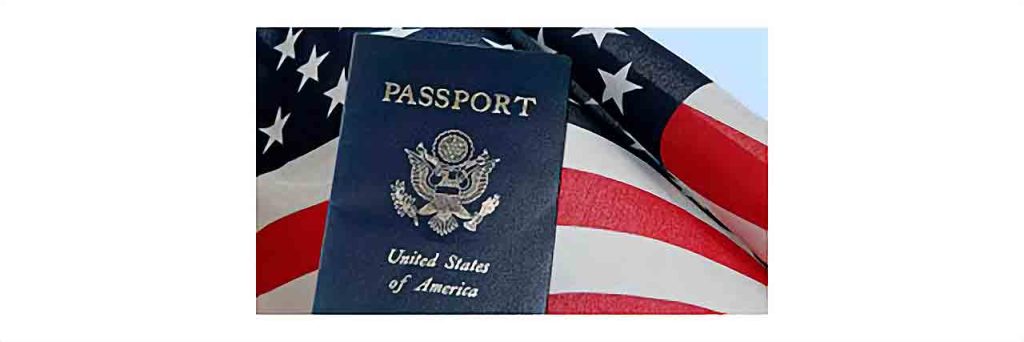The DIY K-1 Fiancé Visa Guide
You’ve found the woman you want to marry, but there’s one challenge: she lives in another country. The question of “How?” can feel overwhelming, but modern tools have made the process more manageable than ever. This guide will break down the entire complex process of bringing your foreign fiancée to the United States into simple, actionable steps, centered around a helpful **DIY K-1 Fiancé Visa Package**.

Chapter 1: What is a K-1 Fiancé Visa?
The K-1 nonimmigrant visa is specifically for the foreign-citizen fiancé(e) of a United States citizen. Its purpose is to allow your fiancée to travel to the United States and marry you, the U.S. citizen sponsor, **within 90 days of her arrival.** After the marriage, she can then apply for a marriage green card (Adjustment of Status) to become a lawful permanent resident. This is often a much faster process than getting married abroad and applying for a green card through consular processing.
Costs and Timeline at a Glance
- K-1 Visa Cost: Approximately $1,200 in government fees.
- Adjustment of Status Cost: Approximately $1,760 after marriage.
- Processing Time: The entire process, from initial application to arrival, can take around 12 months or more.
Chapter 2: The Step-by-Step K-1 Visa Process
The application process involves several key stages. While it may seem complex, it can be broken down into a logical sequence.
- File the Petition: The process begins when you, the U.S. citizen sponsor, file Form I-129F, Petition for Alien Fiancé(e), with U.S. Citizenship and Immigration Services (USCIS).
- Gather Required Documents: This is the most paperwork-intensive part of the process. Forgetting a single document can cause major delays.
- The Consular Interview: Once the petition is approved and processed, your fiancée will be called for an interview at the U.S. embassy or consulate in her country. This is the most crucial phase.
- Visa Approval and Travel: If the interview is successful, her visa will be issued, and she can travel to the United States.
- Marriage & Adjustment of Status: You must get married within 90 days of her arrival. Afterward, she can apply for her green card to live and work permanently in the U.S.
Key Documentation for the Visa Interview
You and your fiancée must bring the following to the visa interview:
- Form DS-160: The completed Online Nonimmigrant Visa Application confirmation page.
- Valid Passport: For travel to the U.S. with at least six months of validity beyond her intended stay.
- Essential Certificates: Her birth certificate, and divorce or death certificates for any previous spouses (for both of you).
- Police Certificates: From her current country of residence and any country where she has lived for six months or more since age 16.
- Medical Examination Report.
- Evidence of Financial Support: Form I-134, Affidavit of Support, may be requested.
- Proof of Your Relationship: This is critical. Include photos of you together, copies of letters and emails, travel itineraries from your visits, etc.
Chapter 3: The DIY K-1 Fiancé Visa Package – Your Solution
Feeling overwhelmed? You’re not alone. While you can hire an immigration attorney for thousands of dollars, a more affordable and highly effective solution is a Do-It-Yourself Visa Package. This ready-made kit is designed to guide you through the entire procedure without the high cost of a lawyer.
Benefits of the DIY Visa Kit
- Complete Document Guide: It outlines and explains every required document for your specific situation to ensure your submission is complete and processed without delays.
- Step-by-Step Instructions: The guide explains what to do and what to expect at every stage of the process in plain, easy-to-understand English.
- IMBRA Compliance: It includes a full discussion of the International Marriage Broker Regulation Act (IMBRA) and how to comply with its requirements.
- Invaluable Reference: It’s a resource loaded with advice that you can refer to throughout the entire journey, from petition to green card.
Your complete DIY K-1 Fiancé Visa Package is ONLY $89.50.
Chapter 4: Understanding IMBRA
The International Marriage Broker Regulation Act of 2005 (IMBRA) is a U.S. law designed to protect foreign fiancées. Before an international marriage agency can release a woman’s personal contact information to a U.S. man, it must collect a background disclosure form from the man. This form asks about certain criminal convictions and past marital history. This is a mandatory legal procedure to ensure transparency and safety for your future wife.
To comply, you must complete an **IMBRA Clearance Request/Order Form** through the agency. This process involves a processing fee (typically around $400) and requires the woman to physically sign a consent form. If she declines, your fee is refunded. This procedure is not required if you travel to her country and meet her without using an agency to exchange contact information.
A Foreign Affair. Russian women want you.
Frequently Asked Questions (FAQ)
What is the minimum income requirement for the U.S. sponsor?
As the U.S. citizen sponsor, you must have an income that is at least 100% of the federal poverty guidelines for your household size. The foreign fiancée does not have an income requirement.
Can my fiancée work in the U.S. on a K-1 visa?
Yes. Upon arrival, she can apply for a work permit (Form I-765), but it will only be valid for the initial 90-day period. The best way to get a longer-term work permit is to apply for the Marriage Green Card after you are married.
Can I bring my fiancée’s children with her?
Yes. Her unmarried children under the age of 21 are eligible to apply for K-2 visas to accompany her. They must be listed on the initial Form I-129F petition.
What happens if my K-1 visa petition is denied?
If your petition is denied, you may be able to file an appeal. It is highly recommended to work with an experienced immigration lawyer to handle an appeal, or to use the DIY Visa Kit to ensure your initial application is perfect.
Do we have to be engaged before applying for the K-1 visa?
Yes. You must prove that you have a bona fide intention to marry. This includes providing evidence of your engagement and your ongoing relationship, such as photos, correspondence, and statements from friends and family.
What is IMBRA and why is it important?
IMBRA is a U.S. law that provides protections for foreign mail-order brides. It requires background checks for U.S. men using marriage broker services and informs the foreign fiancée of her legal rights, helping to prevent abuse.
Do I need an immigration lawyer, or is the DIY kit enough?
For most straightforward cases, the DIY Visa Kit provides all the information and step-by-step guidance needed to complete the process successfully. If your case has complex issues (such as a criminal record or previous immigration problems), consulting an immigration lawyer is a good idea.
What’s the difference between a K-1 Fiancé visa and a Spousal visa?
The K-1 visa is for a fiancée to come to the U.S. *to get married*. The Spousal Visa (CR-1/IR-1) is for a partner to whom you are *already legally married* abroad. The K-1 is generally the faster route to get your partner into the country.
What is the most crucial part of the K-1 visa application?
Proving that your relationship is “bona fide” (genuine). This is done through extensive documentation, including photos together, flight itineraries from your visits, copies of chats and emails, and sworn statements from people who know you as a couple.
What happens if we don’t get married within the 90-day period?
If you do not marry within 90 days of her arrival, your fiancée’s K-1 visa will expire, and she will be required to depart the United States. There are no extensions to the 90-day period.





